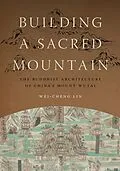By the tenth century CE, Mount Wutai had become a major pilgrimage site within the emerging culture of a distinctively Chinese Buddhism. Famous as the abode of the bodhisattva Mañjusri (known for his habit of riding around the mountain on a lion), the site in northeastern China's Shanxi Province was transformed from a wild area, long believed by Daoists to be sacred, into an elaborate complex of Buddhist monasteries.
In Building a Sacred Mountain, Wei-Cheng Lin traces the confluence of factors that produced this transformation and argues that monastic architecture, more than texts, icons, relics, or pilgrimages, was the key to Mount Wutai's emergence as a sacred site. Departing from traditional architectural scholarship, Lin's interdisciplinary approach goes beyond the analysis of forms and structures to show how the built environment can work in tandem with practices and discourses to provide a space for encountering the divine.
Art History Publication Initiative. For more information, visit http://arthistorypi.org/books/building-a-sacred-mountain
Vorwort
In Building a Sacred Mountain, Wei-Cheng Lin traces the confluence of factors that produced the transformation of Mount Wutai and argues that monastic architecture, more than texts, icons, relics, or pilgrimages, was the key to its emergence as a sacred site.
Autorentext
Wei-Cheng Lin is assistant professor of Chinese art history at the University of North Carolina at Chapel Hill.
Inhalt
AcknowledgmentsChronology of Chinese DynastiesIntroduction1. Building the Monastery, Locating the Sacred Presence2. Entering the Mountains, Localizing the Sacred Presence3. The Sacred Presence in Place and in Vision4. Mediating the Distance to Mount Wutai5. Reconfiguring the Center6. Narrative, Visualization, and Transposition of Mount WutaiConclusionAppendix 1Appendix 2Appendix 3Conventions and AbbreviationsNotesGlossaryBibliographyList of IllustrationsIndex
